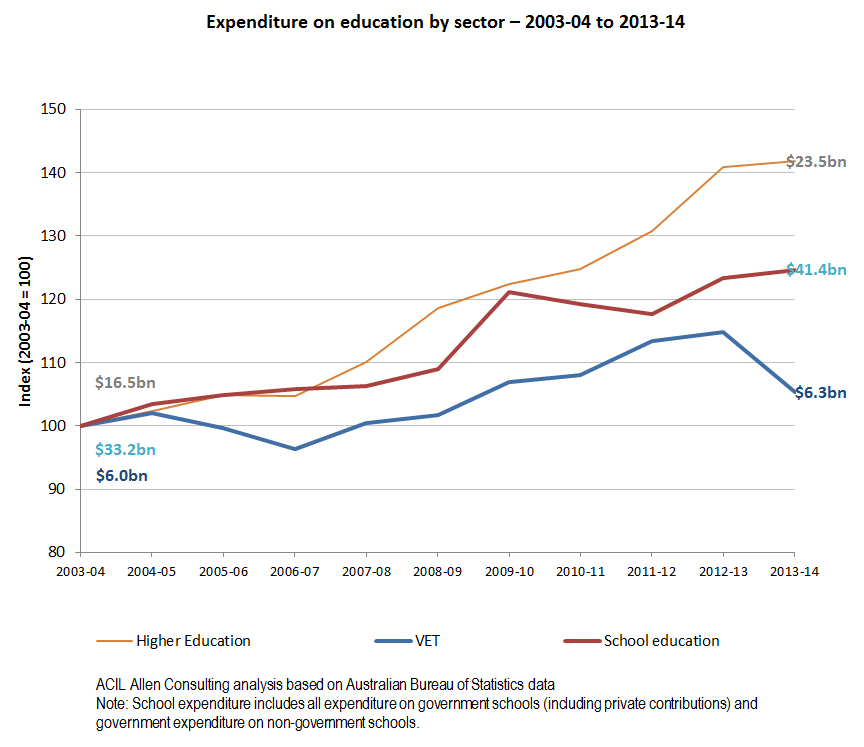Inconsistent spend on education & training doesn’t support calls to improve job skills, report

A comparative analysis of Australia’s expenditure on schooling, higher education and vocational education and training (VET) shows that despite national calls from business, unions and community groups to improve job prospects and workforce skill levels, expenditure across education and training is disjointed and uneven.
The analysis, which draws on work undertaken by ACIL Allen Consulting for the Mitchell Institute, updates Mitchell’s 2014 analysis of expenditure across schools, VET and higher education in Australia. The update now includes figures from 2013-14.
The report shows that growth in expenditure on higher education in Australia increased in real terms by over 40 per cent between 2003-4 and 2012-13 but flattened to $23.5 billion in 2013-14. Expenditure in the school sector had consistent growth during 2003-4 to 2013-14 to reach $41.4 billion.
Meanwhile, expenditure in VET declined sharply between 2012-13 and 2013-14 dropping to $6.3 billion - a return to near 2003-04 funding levels.

The report findings will be presented at the Australian Council for Private Education and Training (ACPET) Conference on Friday 28 August in Melbourne by one of the report authors, Mitchell Professorial Fellow Peter Noonan.
“This analysis shows that Australian governments have been prioritising their investment in some aspects of education over others,” said Professor Noonan. “There appears to be no cohesive policy or funding framework for government investment across the education sectors and this should be a major concern.”
“With all the talk about repositioning our economy, skills shortages, and the idea that future workers will have multiple careers and need to retrain throughout their lives, a high quality, integrated and responsive education and training system is key to ensuring a successful future.”
This year, the analysis also looked at growth in Commonwealth Government payments for income contingent loans for tertiary education and training. It shows significant growth in HELP payments to tertiary education providers over the period 2008-2013 and details the extent to which VET FEE-HELP has grown since its introduction in 2009.
The report also includes non-government school sector income from private sources. It shows significant growth from private sources of over 20 per cent in both the Catholic and independent sectors from 2005 to 2011, to approximately $2.7 billion (Catholic schools) and $5.2 billion (independent schools) in 2011.
Media enquiries
Peter Noonan, Mitchell Professorial Fellow, +61 407 372 433
Julia Johnston, Communications and Media Director +61 401 136 114



